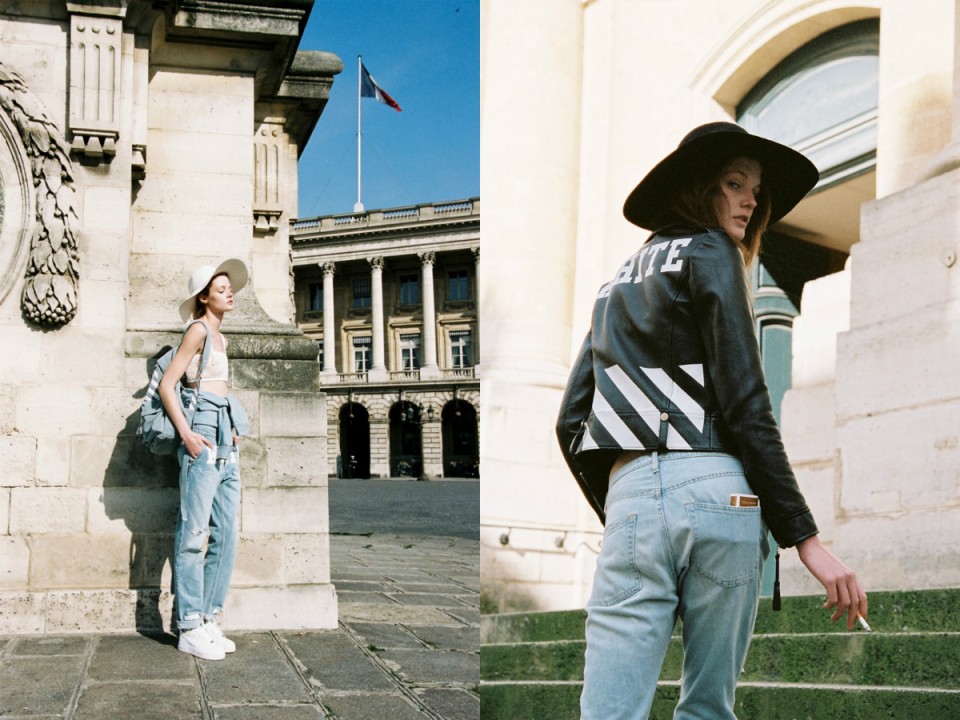Virgil Abloh's Transformation from Pyrex Vision to Off-White
In 2013, Pyrex Vision was single-handedly the brand that started the movement of streetwear becoming an ambiguous term.
The premise of street style was already something I considered vague when I first started participating in this subset of fashion culture, and Pyrex Vision was something I did not fully comprehend. On the surface level, I was not entirely sure about what made this brand so special. Rugby flannels with screen-printed images on the back was not something I would have considered worth $300. And it's not like this concept didn't come with disdain from the fashion community.
"What was the point of this?", one would say. "I could literally go buy a rugby flannel and get the screen-printing done myself. This just seems like an emphatic attempt to get famous and make a lot of money. A pointless endeavor."
And of course I was one of the naysayers. The concept of money was a huge ordeal when it came to fashion for me early on. At the tender age of 21, I did not believe the ludicrous prices of designer and exclusivity clothing was worth my time or money. My perception eventually changed, as I began to see that garments were amounted to the value that you personally invested into them, as well as being viewed from an individualistic and artistic perspective.
As time went on, I began to see Abloh's transformation from a common, silk screen printing streetwear start up, to an ostentatious, powerful form of contemporary art.
From DJ'ing in college and skateboarding, to getting his Masters in Architecture, Virgil Abloh, 32, started as the owner of 2013 streetwear powerhouse Pyrex Vision, gaining notoriety and steam through celebrity co-signs such as Kanye West and Future. As time went on, Abloh later became the creative director of Pyrex Vision's evolved form, Off-White c/o Virgil Abloh. I would admit that starting out, the brand seemed like a complete off-shoot of the former. Screen-printed t-shirts, flannels and hoodies, Abloh was not exactly making his mark just yet.
Virgil Abloh Via Snarkitecture
My viewpoint on Off-White did not differentiate until his Fall/Winter 2015 "Don't Look Down" collection. The holiest of grails appeared, and never did I look at Abloh the same ever again. I've never seen such a beautiful piece of clothing in my life (Besides the Dries Van Noten Zipper Bomber Jacket, but that's another story.).
Via BIAF
What made Off-White such an interesting brand was that I noticed Abloh's collections were progressing with every season. It stopped looking like a classic streetwear brand and began to seem more like a high-end designer house with contemporary artistic influences. I felt that he was truly passionate about the garments he was creating, and it wasn't like another off-shoot of something that we've all seen before with Pyrex Vision.










I think the most impressive part about Abloh would be his womenswear collections. A lot of the pieces he's designing take from inspiration from certain legendary designers such as Maison Martin Margiela and Raf Simons. Meanwhile, there's also an underlying archetypal theme of streetwear being infused within all of his clothes, which is something a ton of designers have not really incorporated into modern contemporary fashion.






It is truly inspirational for me to see another African-American male designer go about setting forth his vision to the world. It doesn't just stop there. As mentioned before, Abloh is also a DJ (and is set to be playing a set during ComplexCon in November) and runs an online branding class through Mastered. With the many talents Mr. Abloh has to offer, it would be wise to keep an eye out for anything this sets his heart to.
